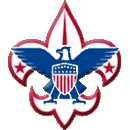| MERIT BADGES |
|
|
|
|
| Note: Eagle Required are in Italics |
"A"
American
Business
American Culture
American Heritage
American Labor
Animal Science
Archaeology
Archery
Architecture
Art
Astronomy
Athletics
Atomic Energy
Auto Mechanics
Aviation
"B"
Backpacking
Basketry
Bird Study
Bugling
"C"
Camping
Canoeing
Chemistry
Cinematography
Citizenship
Community*
Citizenship Nation*
Citizenship World*
Climbing
Coin Collecting
Collections
Communications*
Computers
Cooking
Crime Prevention
Cycling*
"D"
Dentistry
Disability Awareness
Dog Care
Drafting
"E"
Electricity
Electronics
Emergency
Preparedness**
Energy
Engineering
Entrepreneurship
Environmental
Science*
"F"
Family Life*
Farm Mechanics
Fingerprinting
Fire Safety
First Aid*
Fish & Wildlife Mgmt.
Fishing
Fly Fishing
Forestry
"G"
Gardening
Genealogy
Geology
Golf
Graphic Arts
"H"
Hiking
Home Repairs
Horsemanship
"I"
Indian Lore
Insect Studies
"J"
Journalism
"K"
"L"
Landscape Architecture
Law
Leatherwork
Lifesaving**
"M"
Mammal Study
Medicine
Metalwork
Model Design & Building
Motorboating
Music
"N"
Nature
"O"
Oceanography
Orienteering
"P"
Painting
Personal Fitness**
Personal Management*
Pets
Photography
Pioneering
Plant Science
Plumbing
Pottery
Public Health
Public Speaking
Pulp and Paper
"Q"
"R"
Radio
Railroading
Reading
Reptile & Amphibian Study
Rifle Shooting
Rowing
"S"
Safety
Salesmanship
Scholarship
Sculpture
Shotgun Shooting
Skating
Skiing
Small Boat Sailing
Soil & Water
Conservation
Space Exploration
Sports**
Stamp Collecting
Surveying
Swimming**
"T"
Textile
Theatre
Traffic Safety
Truck Transportation
"U"
"V"
Veterinary Medicine
"W"
Water Skiing
Weather
Whitewater
Wilderness Survival
Wood Carving
Woodwork
"X"
"Y"
"Z"
|
|
- Talk over how textiles are important to man.
- Do ONE of the following:
- Visit a textile plant or school. Report on what you saw.
- Explain the main steps in making a fiber into cloth. Name the machines used in each step. Tell what each machine does.
- Describe four ways of adding colors to textiles.
- Do ONE of the following:
- Get one sample in each of the three major classes of woven fabrics:
- clothing,
- home use,
- industrial.
- Get one sample of knit or double-knit fabric. Compare these to those that were woven.
- Get one sample in each of the three major classes of woven fabrics:
- Do TWO of the following:
- Show one good way to test fibers for recognition.
- Waterproof a piece of cloth.
- Weave a piece of cloth. Use a simple loom that you have made yourself.
- Define 10 of the following terms: fiber, filament, yarn, tufting, nonwoven, tricot, plastic, Jacquard, full fashioned, Greige goods, bleaching, finishing, mercerization, screen printing, roller printing, durable press, sanforizing, preshrunk, water repellent, and fire retardant.
- Get small samples of two of the following natural fibers: cotton, wool, silk, or linen. Get two of the following classes of man-made fibers: rayon, nylon, polyester, glass fiber, and acrylic. Tell how two of these are different. Give the advantages of each.
- Talk over or make a written report on jobs in five main branches of the textile industry.
|
||||||
Last Update May 15, 2023

.jpg)

 Textile
Textile